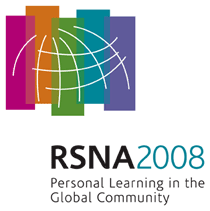
Abstract Archives of the RSNA, 2008
SSE02-03
The Use of Skin Markers in the Performance of Mammography: A Survey of the Tendencies and Protocols of Breast Imaging Facilities in the United States
Scientific Papers
Presented on December 1, 2008
Presented as part of SSE02: Breast Imaging (Mammography)
Stuart Scott Kaplan MD, Abstract Co-Author: Nothing to Disclose
Abraha Taddese MD, PhD, Presenter: Nothing to Disclose
To determine the similarities and differences in the types and frequency of skin markers used during the performance of screening and diagnostic mammography at Breast Imaging facilities throughout the United States.
A standardized two-page survey was sent at random to Breast Imaging facilities throughout the United States. A description of the intention of the survey was included. The survey asked the number of mammograms performed, how often specific findings (moles, scars, palpable findings, pain, nipples) on the skin were marked, what specific shape of marker was used, whether all scars or only lumpectomy scars were marked and for how many years following surgery, and various questions regarding the individual facility’s protocols for using skin markers. The facility was asked to fax the completed survey to a number listed on the form. A two-dollar honorarium was included with each survey.
More than 600 breast imaging facilities responded with completed surveys. There was consistency in the frequency of marking palpable findings (90.5% responded “always”, an additional 5 % responded “mostly”), and moles (73.3% “always”, 23.3% “mostly”). Variability in frequency among imaging facilities, existed in the marking of the nipples, scars and focal pain. Consistent marking (greater than 85 % concordance among imaging facilities) of nipples (pellets), scars (lines or wires) and moles (circles) was demonstrated in regard to the shape of the marker. However, there was variability in the shapes used to mark palpable findings and areas of focal pain.
Most factors in the performance of mammography in the United States are standardized and governed by MQSA guidelines, insuring reproducibility and diminishing variability. However, the use of skin markers in mammography has not been included as part of these requirements or other guidelines. The results of this survey help determine the tendencies of mammography facilities in the use of skin markers, and can be used to develop standards that can be incorporated into the guidelines for the performance of screening and diagnostic mammography.
By demonstrating the tendencies of mammography facilities in the U.S., this study may help establish standardization in the use of skin markers in the performance of mammography.
Kaplan, S,
Taddese, A,
The Use of Skin Markers in the Performance of Mammography: A Survey of the Tendencies and Protocols of Breast Imaging Facilities in the United States. Radiological Society of North America 2008 Scientific Assembly and Annual Meeting, February 18 - February 20, 2008 ,Chicago IL.
http://archive.rsna.org/2008/6011800.html

